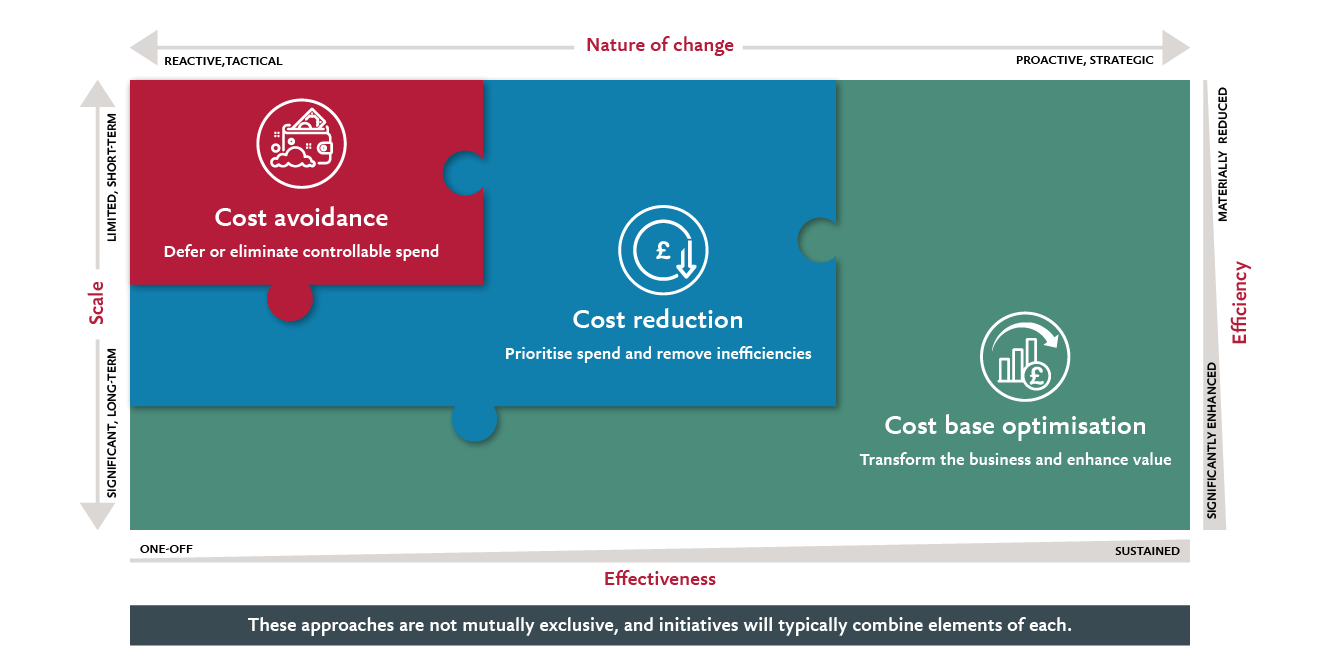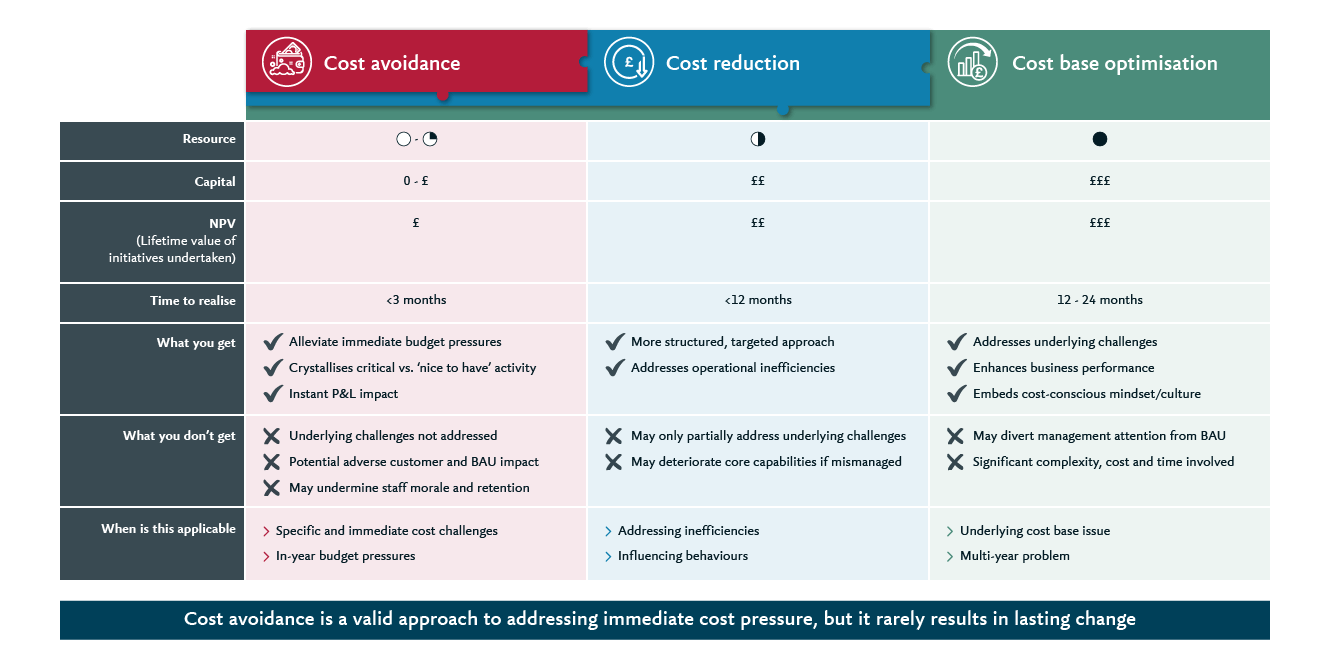Cost optimisation: know your options
Businesses are facing increasingly challenging operating conditions, driven by various internal and external factors. Many are under pressure to achieve short-term cost savings.
There are a few different cost optimisation options open to businesses, often more than leaders first realise, and these can often be mixed and matched. There is no one-size-fits-all ‘right’ answer and choosing a path forward depends on the outcomes you need to achieve and the trade-offs you’re willing to accept.
This guide will help you understand the different options available, their potential and their limitations.
How can you respond to cost pressure?

Cost avoidance involves deferring or cancelling controllable spend in the near term. It would typically be appropriate when undertaken in reaction to an unexpected event or materially adverse underperformance.
Cost reduction efforts typically focus on identifying and eliminating activities that generate limited or no value to enhance budgets. They are usually undertaken to address medium-term cost pressure.
Cost base optimisation involves evaluating which activities to undertake and how they are performed across the entire organisation. Such programmes require long-term, structural change and so typically form part of a strategic transformation.
The drivers for undertaking a cost initiative will dictate the urgency, scale and speed of the change required – and therefore which options are available and the range of actions within.
Comparing the cost optimisation options: benefits and trade-offs

Each option has its benefits but also potential drawbacks or trade-offs.
Cost avoidance is a valid approach to addressing immediate budget pressures, but it will not solve underlying challenges and rarely results in lasting change. It also has the potential to negatively impact business-as-usual operations, staff morale and retention, and the customer. Typical cost avoidance activities include freezing recruitment and non-critical spending in areas such as marketing, research and development, and maintenance. This option is most appropriate when seeking to mitigate specific cost challenges and in-year budget pressures.
At the other end of the scale, cost base optimisation would address underlying cost base issues and enhance long-term business performance but this comes at the cost of increased capital investment and a longer timescale for realisation. Example activities include optimising sales channels and the product portfolio, implementing shared back-office services, and embedding real-time data and analytics. Organisations which undertake this option are usually taking a proactive, strategic approach, seeking to stay ahead of competitors, drive down long-term fixed costs and realise enduring benefits.
In between these two options, cost reduction would offer a more structured, targeted approach that addresses operational inefficiencies. It is less time and capital-intensive than cost base optimisation but would only partially address underlying challenges. If cost reduction isn’t carefully managed, there is also the risk core capabilities could deteriorate. Cost reduction activities can include sourcing cheaper materials, renegotiating supplier terms and consolidating office locations.
Choosing the ‘right’ cost optimisation approach for your business
There is often no single ‘right’ answer when it comes to cost optimisation. The options we’ve discussed are not mutually exclusive, and effective cost optimisation initiatives often combine elements of each. Activities which align with each option can often be mixed and matched depending on your circumstances and/or the desired outcomes.
The correct approach for each organisation depends on assessing their unique conditions, including their business-as-usual operations, internal and external drivers of cost pressures, and longer-term strategic ambitions. Cost optimisation decisions must be taken with full consideration of the implications for the business, what outcomes can be achieved and what risks can be tolerated.








